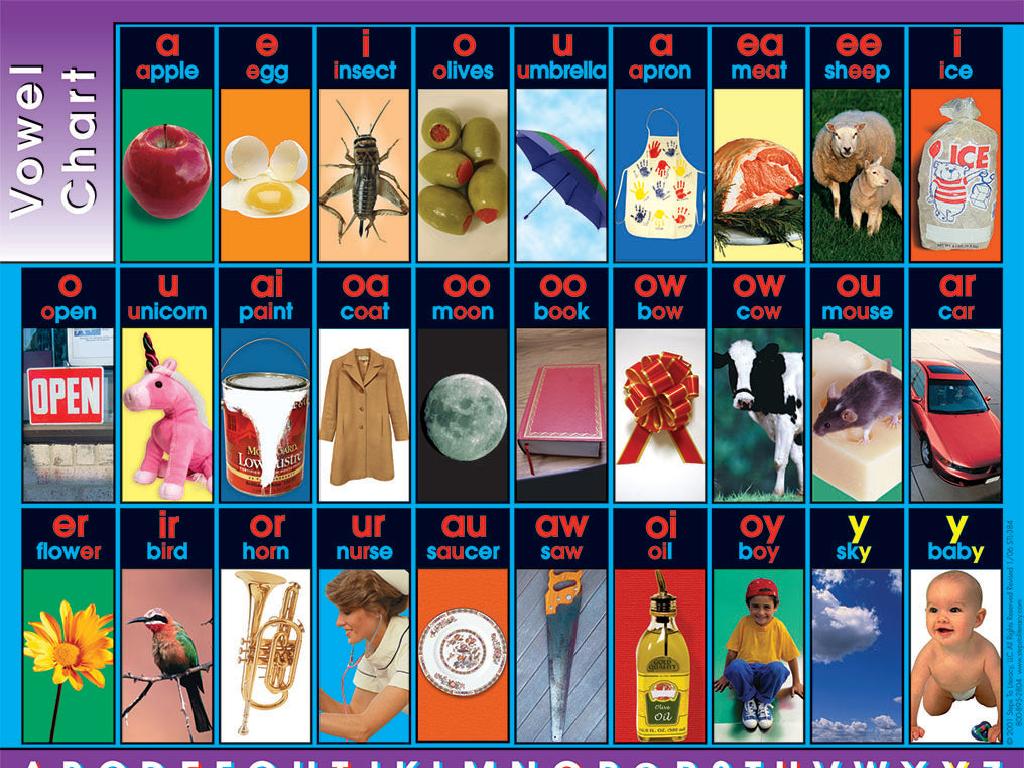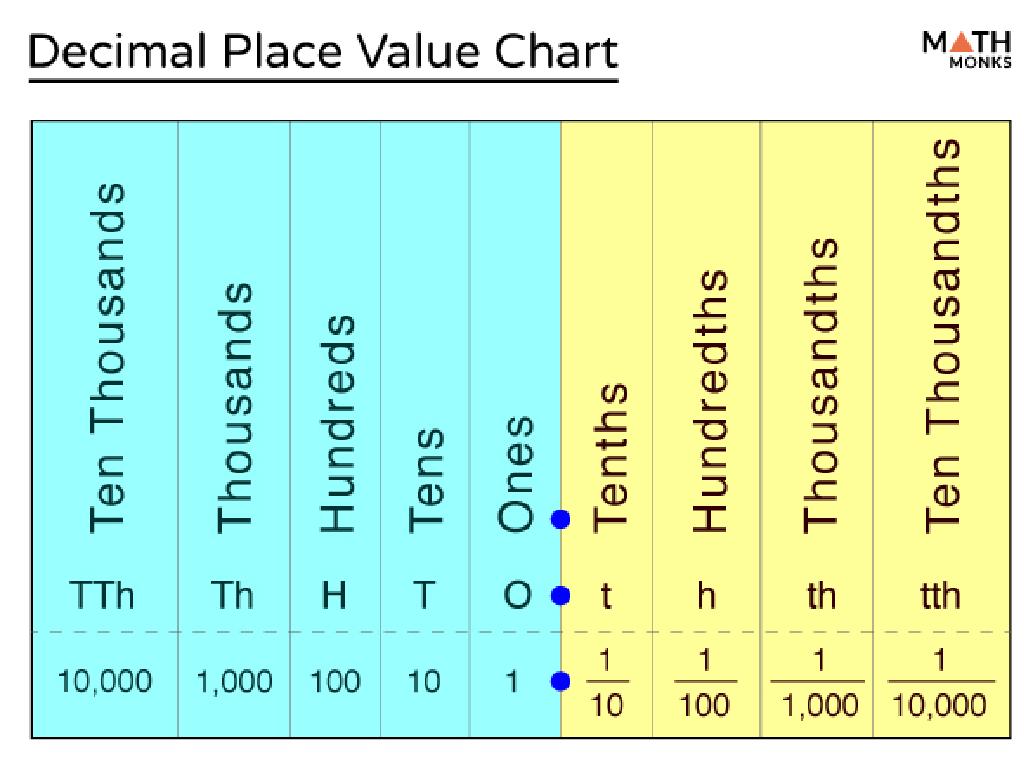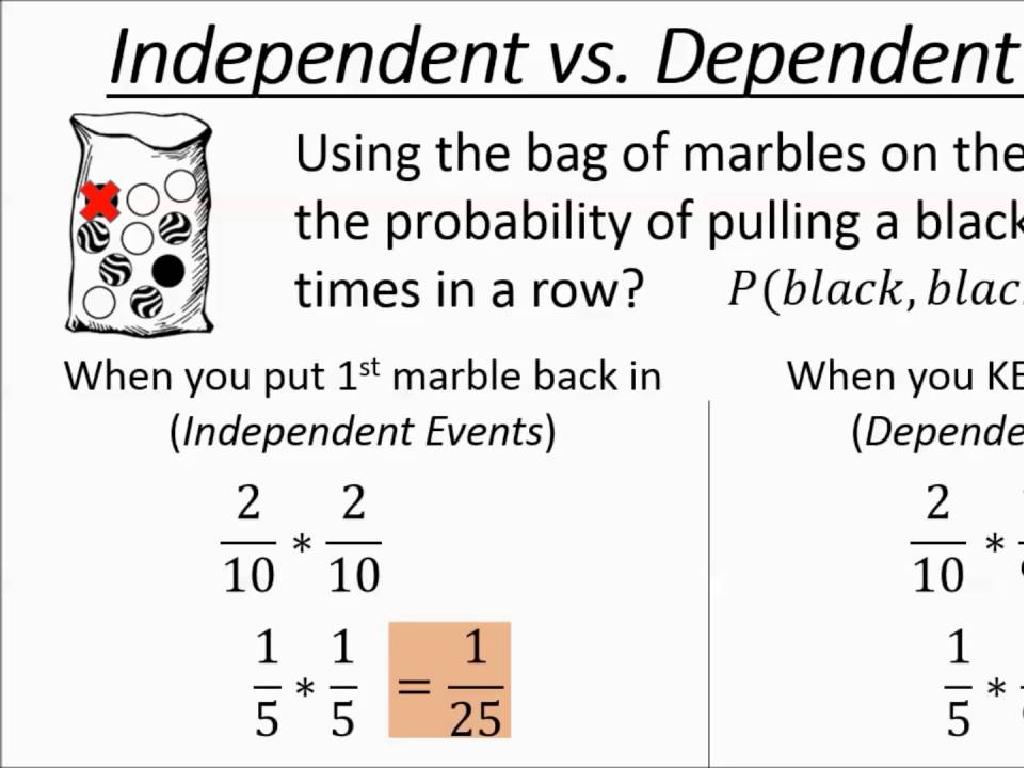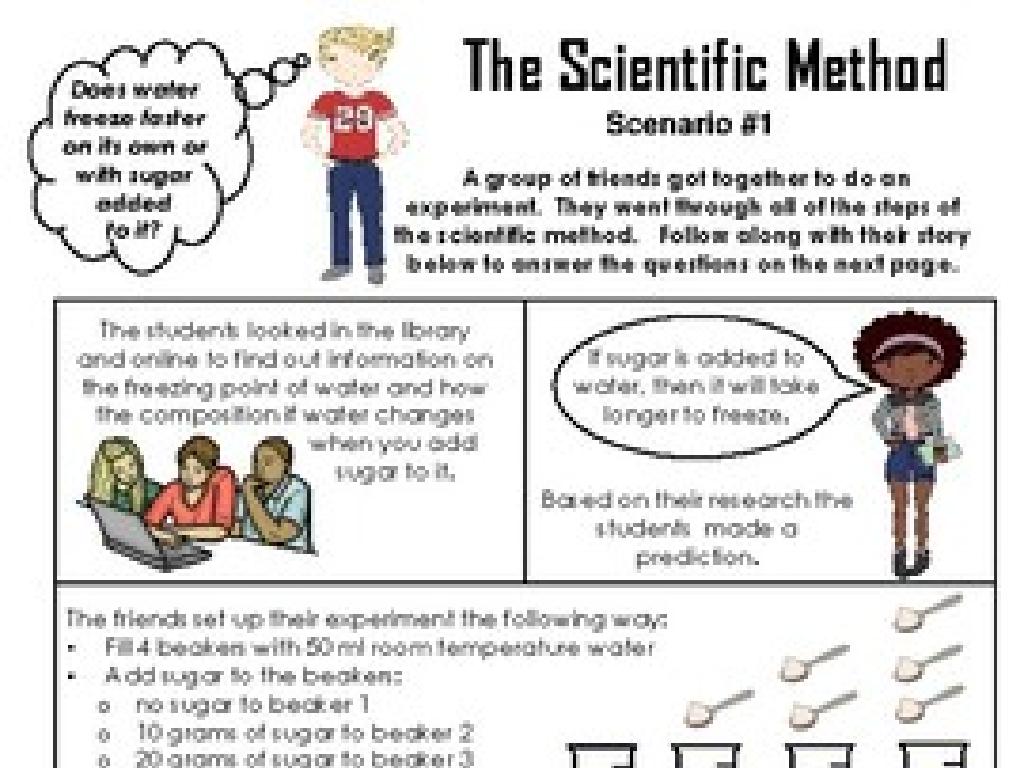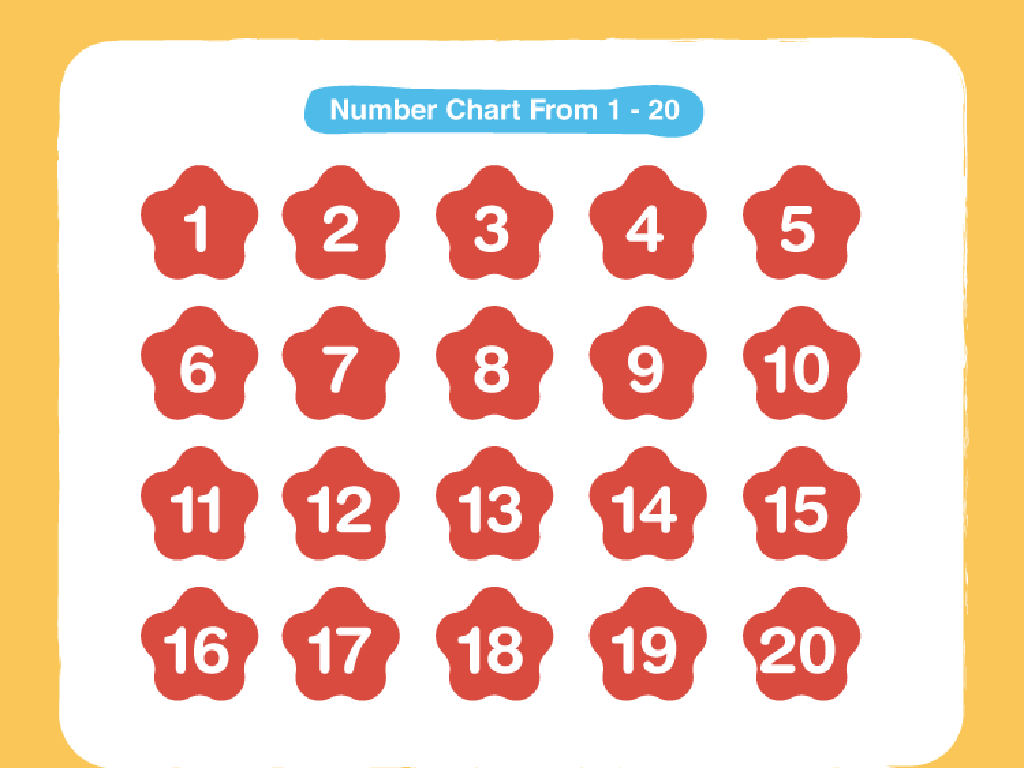Identify Supporting Details In Literary Texts
Subject: Language arts
Grade: Fourth grade
Topic: Distinguish Facts From Opinions
Please LOG IN to download the presentation. Access is available to registered users only.
View More Content
Today’s Adventure: Identifying Supporting Details!
– Fact vs. Opinion
– A fact is something true and can be proven. An opinion is what someone thinks or feels.
– Spotting Supporting Details
– Look for sentences that describe or explain the main idea.
– Examples in Literature
– ‘Charlotte’s Web’: Facts about spiders; Opinions about characters.
– Practice with a Short Story
|
Begin the lesson by explaining the difference between facts and opinions. Facts are statements that can be verified, while opinions are based on personal feelings and beliefs. Use examples from familiar literature, such as ‘Charlotte’s Web’, to illustrate how supporting details help describe and clarify the main idea. Provide a short story for the class to read together, and then work as a group to identify the supporting details. This activity will help students practice distinguishing between factual information and the opinions of characters within a text. Encourage students to ask questions if they are unsure whether a statement is a fact or an opinion.
Understanding Facts and Opinions
– Fact: A statement that can be proven
– Example: ‘The sky is blue’ can be proven by observation
– Opinion: Someone’s thoughts or feelings
– Example: ‘Chocolate is the best flavor’ is a personal preference
– Proving it: Is it a fact or opinion?
– Ask: Can this statement be tested or verified?
– Practice distinguishing facts from opinions
|
This slide introduces the concept of facts and opinions, which is crucial for students to understand when analyzing literary texts. A fact is something that can be proven to be true or false, such as a measurable or observable phenomenon. An opinion reflects personal beliefs, feelings, or thoughts, and cannot be proven. Encourage students to ask themselves if a statement can be tested or verified to determine if it’s a fact. Provide examples and engage the class in an activity where they identify facts and opinions from a text or everyday statements. This will help them to critically evaluate information and understand the author’s perspective in literary works.
Finding Supporting Details in Texts
– What are supporting details?
– Details that explain or support the main idea of a text.
– They clarify the main idea
– They add depth to the main idea, making it clearer and more complete.
– Answering the 5 Ws and How
– Who did what? Where and when did it happen? Why and how did it occur?
– Examples in literary texts
– For instance, in a story about a lost dog, details about the dog s collar or where it was last seen help support the main idea.
|
This slide introduces the concept of supporting details, which are crucial for students to understand when analyzing literary texts. Emphasize that supporting details are the pieces of information that flesh out the main idea, making it more vivid and understandable. Encourage students to ask questions about who, what, where, when, why, and how to identify these details in texts. Provide examples from familiar stories or books read in class to illustrate how supporting details function. In the next class, practice identifying supporting details in different texts to reinforce this concept.
Understanding Supporting Details
– ‘The sky is clear and blue.’
– Supporting Detail: No clouds in the sky
– Fact: It’s an observable and verifiable statement.
– ‘Chocolate is the best ice cream.’
– Supporting Detail: Rich taste loved by many
– Opinion: It’s a personal preference or belief.
|
This slide aims to help students differentiate between facts and opinions by using supporting details. The first example is a fact because it can be proven true or false by observation. The supporting detail reinforces the fact by providing observable evidence. The second example is an opinion because it expresses a personal preference that cannot be proven true or false. The supporting detail here tries to justify the opinion by mentioning a common preference. Encourage students to look for supporting details in texts to determine whether a statement is a fact or an opinion. This will enhance their critical reading skills.
Practice Time: Facts vs. Opinions
– Read a story as a class
– Spot facts and opinions
– Facts are statements that can be proven true or false
– Identify supporting details
– Details in the text that back up the facts or opinions
– Discuss our findings together
|
This activity is designed to help students practice distinguishing between factual statements and opinions within the context of a literary text. Begin by selecting a short story appropriate for fourth graders. As you read the story aloud, pause to discuss certain sentences and ask students whether they are stating a fact or an opinion. Encourage them to use supporting details from the text to justify their answers. This will not only improve their critical thinking skills but also enhance their comprehension of the story. After reading, have an open discussion where students can share the facts and opinions they found and the supporting details that helped them decide. Possible activities could include students writing down examples on a worksheet, working in pairs to identify facts and opinions, or creating a chart on the board to categorize statements from the story.
Class Activity: Fact or Opinion Game
– Determine if statements are facts or opinions
– Find supporting details in the story
– Look for evidence in the text that supports the statement
– Discuss answers with a classmate
– Work in pairs for collaboration
|
This interactive class activity is designed to help students practice distinguishing between factual statements and opinions within the context of literature. Provide students with a mix of statements related to the story they have read. They will work in pairs to decide whether each statement is a fact that can be proven with evidence from the text or an opinion that is based on personal beliefs or feelings. Encourage them to find specific details in the story that support their decisions. This activity promotes critical thinking, reading comprehension, and collaborative learning. Possible variations of the activity could include group discussions, writing exercises, or creating a class chart of facts and opinions from the story.
Conclusion: Facts vs. Opinions
– Importance of distinguishing facts from opinions
– Knowing the difference helps us evaluate the truthfulness of a text.
– Supporting details enhance comprehension
– They provide evidence for the main ideas, making the text clearer.
– Reflect on today’s learning
– Share your thoughts
|
Understanding the distinction between facts and opinions is crucial for students as it allows them to critically analyze texts and discern the reliability of the information presented. By identifying supporting details, students can better grasp the main ideas and arguments within a text, leading to improved reading comprehension. Encourage students to reflect on the importance of this skill and how it can be applied in their daily reading. Ask them to share one thing they’ve learned, which will help reinforce their understanding and give you insight into their learning process.

